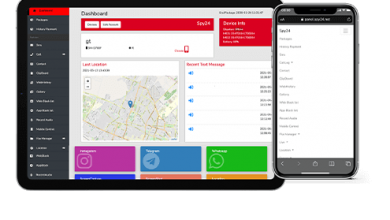Cybersecurity 101: An Overview of the Most Common Types of Cybersecurity Attacks

SQL Injections – Cybersecurity
When an attacker inserts malicious code into a server using server query language (SQL), the server is forced to divulge protected information. This form of attack often entails inserting malicious code into an unprotected website comment or search box.
SQL injections
- Cyber security secure coding methods such as
- utilising prepared statements
- with parameterized queries.
When a SQL statement utilises a parameter instead of simply adding the values, the backend can conduct malicious queries. Furthermore, the SQL interpreter just utilises the argument as data, rather than executing it as code. Learn more about how secure coding principles can help you avoid SQL injection. Looking to Hire a cyber security experts for securing business data.
Zero-day Exploit– Cybersecurity
Zero-day attackers take advantage of the revealed vulnerability during the brief period in which no remedy or preventative measures are available. As a result, combating zero-day threats necessitates continuous monitoring, proactive detection, and adaptive threat management strategies.
Password Attack– Cybersecurity
Passwords
- are the most often used means
- of authenticating access
- to a protected information system,
- making them a tempting target
- for cyber attackers.
An attacker can acquire access to private or vital data and systems by gaining access to a person’s password, including the power to manipulate and manage said data/systems.
Password attackers employ a variety of techniques to determine an individual password, such as social engineering, acquiring access to a password database, testing the network connection to retrieve plaintext passwords, or just guessing.
- as a “brute-force attack”
- since it is carried out
- in a methodical manner.
A brute-force assault uses a software to try all possible information variations and combinations to guess the password.
Another prevalent approach is the dictionary attack, in which the attacker attempts to obtain access to a user’s computer and network by using a list of common passwords. Best practises for account lockout and two-factor authentication are extremely helpful in preventing a password assault. Account lockout features can lock off an account after a certain amount of unsuccessful password tries, while two-factor authentication provides an extra layer of protection by forcing the person signing in to submit a secondary code that is only available on their 2FA device (s).
-
Cross-site Scripting
A cross-site scripting attack inserts harmful scripts into legitimate websites’ content.
The malicious code is
- added to the dynamic content
- provided to the victim’s browser.
- This malicious code
- Javascript code
- that is performed by the victim’s browser,
- but it can also comprise
- Flash,
- HTML,
- and XSS.
- Image via CloudFlare
- More information about cross-site scripting assaults
Rootkits
- are embedded
- in legitimate software
- and can obtain remote control
- and administrative access to a machine.
The rootkit is
- then used by
- the attacker
- to steal passwords,
- keys,
- credentials,
- and vital data.
Because rootkits hide in normal software, once you enable the application to make modifications to your operating system, the rootkit instals itself in the system (host, computer, server, etc.) and remains inactive until activated by the attacker or triggered by a persistence mechanism.
Rootkits
- are typically transmitted
- via email attachments
- and unsecured website downloads.
Internet of Things (IoT) Attacks
While internet connection across practically every possible gadget provides users with comfort and simplicity, it also provides a growing—almost infinite—number of entry points for attackers to exploit and cause devastation.
Because
- everything is linked,
- attackers can break
- an entry point
- and utilise
- it as a gateway
- to target other devices in the network.
Because of the fast proliferation of IoT devices and the (often) poor attention given to embedded security in these devices and their operating systems, IoT assaults are becoming increasingly common. A hacker used an internet-connected thermometer inside one of the facility’s fishtanks to gain access to a Vegas casino in one IoT attack.
Best practises for preventing an IoT attack include upgrading the operating system and using a secure password for each IoT device on your network, as well as changing passwords often.
The Bottom Line
The complexity and diversity of cyber assaults are expanding all the time, with a distinct form of attack for each evil objective. While cybersecurity protection techniques vary depending on the type of attack, solid security practises and basic IT hygiene are typically effective at mitigating these assaults.





